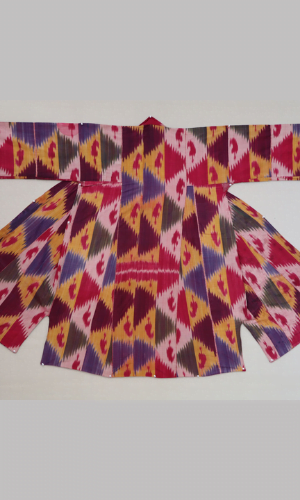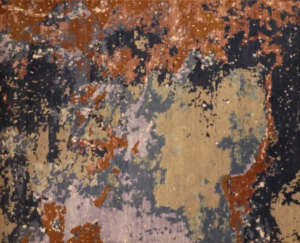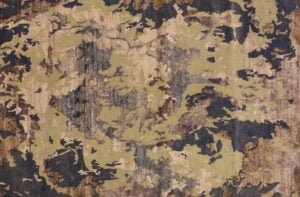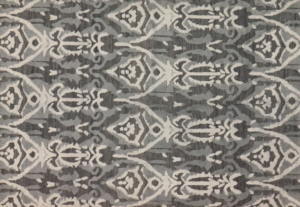Ikat, or ikkat, is a dyeing technique used to pattern textiles that employs resist dyeing on the yarns prior to dyeing and weaving the fabric.
In ikat the resist is formed by binding individual yarns or bundles of yarns with a tight wrapping applied in the desired pattern. The yarns are then dyed. The bindings may then be altered to create a new pattern and the yarns dyed again with another colour. This process may be repeated multiple times to produce elaborate, multicolored patterns. When the dyeing is finished all the bindings are removed and the yarns are woven into cloth. In other resist-dyeing techniques such as tie-dye and batik the resist is applied to the woven cloth, whereas in ikat the resist is applied to the yarns before they are woven into cloth. Because the surface design is created in the yarns rather than on the finished cloth, in ikat both fabric faces are patterned.
A characteristic of ikat textiles is an apparent “blurriness” to the design. The blurriness is a result of the extreme difficulty the weaver has lining up the dyed yarns so that the pattern comes out perfectly in the finished cloth. The blurriness can be reduced by using finer yarns or by the skill of the craftsperson. Ikats with little blurriness, multiple colours and complicated patterns are more difficult to create and therefore often more expensive. However, the blurriness that is so characteristic of ikat is often prized by textile collectors.
Ikat is produced in many traditional textile centres around the world, from India to Central Asia, Southeast Asia, Japan (where it is called kasuri), Africa and Latin America. Double ikats—in which both the warp and weft yarns are tied and dyed before being woven into a single textile—are relatively rare because of the intensive skilled labour required to produce them. They are produced in Okinawa islands of Japan, the village of Tenganan in Indonesia, and the villages of Puttapaka and Bhoodan Pochampally in Telangana in India. In fact, many other parts of India have their indigenous Ikat weaving techniques. Orissa’s Sambalpuri Ikat is quite different from the sharp Ikat patterns, woven in Patan of Gujarat. The latter, known as Patan Patola, is one of the rarest forms of double Ikat, which takes a lot of time and effort in dyeing and weaving. A different form of Patola ikat is made in Rajkot, Gujarat. Telia Rumal made in Andhra, Pasapalli from Odisha and Puttapaka from Telangana are other Indian Ikats.




